Volume 5, Issue 1
Displaying 1-9 of 9 articles from this issue
- |<
- <
- 1
- >
- >|
Review
-
2008Volume 5Issue 1 Pages 1-8
Published: 2008
Released on J-STAGE: March 12, 2008
Download PDF (457K) -
2008Volume 5Issue 1 Pages 9-18
Published: 2008
Released on J-STAGE: March 12, 2008
Download PDF (1028K) -
2008Volume 5Issue 1 Pages 19-26
Published: 2008
Released on J-STAGE: March 12, 2008
Download PDF (676K) -
2008Volume 5Issue 1 Pages 27-36
Published: 2008
Released on J-STAGE: March 12, 2008
Download PDF (938K) -
2008Volume 5Issue 1 Pages 37-47
Published: 2008
Released on J-STAGE: March 12, 2008
Download PDF (709K)
Original Article
-
2008Volume 5Issue 1 Pages 49-56
Published: 2008
Released on J-STAGE: March 12, 2008
Download PDF (634K) -
2008Volume 5Issue 1 Pages 57-63
Published: 2008
Released on J-STAGE: March 12, 2008
Download PDF (523K)
Current View
-
2008Volume 5Issue 1 Pages 65-75
Published: 2008
Released on J-STAGE: March 12, 2008
Download PDF (573K) -
2008Volume 5Issue 1 Pages 77-84
Published: 2008
Released on J-STAGE: March 12, 2008
Download PDF (585K)
- |<
- <
- 1
- >
- >|
